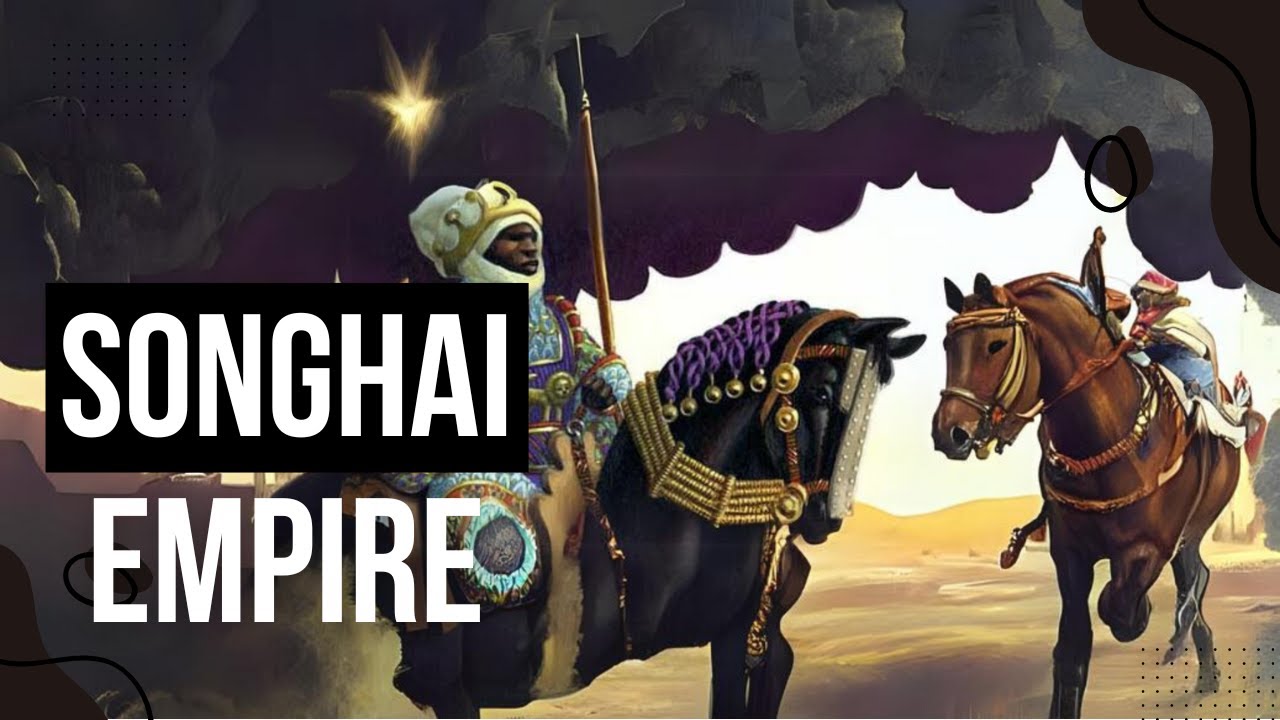The Songhai Empire
Summary
TLDRThe Songhai Empire, one of the largest and wealthiest empires in West Africa, rose to power in the 15th century after the decline of the Mali Empire. Led by military strategist Sunni Ali, it expanded its territory and controlled key trading cities like Timbuktu and Ginnie. Under the reign of Askia Muhammad the Great, the empire adopted Islam, flourished in trade, and became a global center of scholarship, especially in Timbuktu. The empire's sophisticated governance system helped maintain unity, and it produced notable scholars such as al-Saadi, who documented its rich history.
Takeaways
- 😀 Sunni Ali became the first ruler of the Songhai Empire in 1464 AD after the decline of the Mali Empire.
- 😀 The Songhai Empire covered over 1.4 million square kilometers, making it larger than Britain, France, Spain, and Germany combined.
- 😀 Sunni Ali was an exceptionally skilled military strategist and expanded the empire’s territory in all directions, capturing key cities like Timbuktu and Jenne.
- 😀 Sunni Ali was never defeated in battle, often reorganizing his armies and launching multiple military campaigns across West Africa.
- 😀 Askia Muhammad the Great succeeded Sunni Ali in 1493 AD, further expanding Songhai’s influence and wealth.
- 😀 Askia Muhammad was a devout Muslim and made a pilgrimage to Mecca in 1496, bringing 1,000 soldiers and 300,000 pieces of gold with him.
- 😀 Timbuktu became a major center for learning during the reign of Askia Muhammad, with over 150 Quranic schools and 20,000 students.
- 😀 The Songhai Empire became the wealthiest and most powerful empire in West Africa, controlling key trans-Saharan trade routes.
- 😀 Songhai's economy thrived from the trade of salt, gold, and kola nuts, as well as the strategic use of the Niger River for transportation.
- 😀 The Songhai Empire had a sophisticated system of governance with ministries overseeing military, trade, and industry, ensuring stability across vast territories.
- 😀 Notable scholars, like Abdul al-Saadi, contributed to the empire’s intellectual legacy, with Saadi writing the *Tariq al-Sudan*, a key historical work.
Q & A
Who was the first ruler of the Songhai Empire?
-The first ruler of the Songhai Empire was Sunni Ali, who rose to power around 1464 AD after the decline of the Mali Empire.
What geographical region did the Songhai Empire cover at its height?
-At its height, the Songhai Empire covered the region of modern-day Gambia, Senegal, Niger, and northern Nigeria, spanning over 1.4 million square kilometers.
What made Sunni Ali an effective leader?
-Sunni Ali was considered one of the most effective military strategists in world history. He expanded the empire’s territory significantly and was never defeated in war.
What were some of the key cities that Sunni Ali captured?
-Sunni Ali captured key trading cities, including Timbuktu and Jenne, which were essential to the Songhai Empire's wealth and influence.
Who succeeded Sunni Ali as ruler of the Songhai Empire?
-After Sunni Ali, the next ruler was Ischia Muhammad, later known as Muhammad the Great, who came to power in 1493 AD.
What were some significant achievements of Ischia Muhammad the Great?
-Ischia Muhammad the Great expanded the Songhai Empire, made a famous pilgrimage to Mecca in 1496 AD, and re-established Timbuktu as a center of learning, contributing to the development of over 150 Quranic schools.
How did the Songhai Empire contribute to Islamic scholarship?
-The Songhai Empire, especially under Muhammad the Great, promoted Islamic scholarship by establishing numerous schools and producing scholars, scientists, and jurists. Over 20,000 children were educated in the empire's Quranic schools.
What was the economic foundation of the Songhai Empire?
-The Songhai Empire's economy was built on trade, with important commodities such as gold, salt, and kola nuts. The empire controlled the trans-Saharan trade routes and had a sophisticated system of agriculture and mining.
What role did the Niger River play in the Songhai Empire?
-The Niger River was a key resource for the Songhai Empire, supporting fishing industries and acting as an important trade route for goods and merchandise.
How was the Songhai Empire governed?
-The Songhai Empire had a sophisticated system of governance, with ministers overseeing specific sectors like the army, navy, trade, and industry. The empire was divided into regions and provinces, each managed by a governor.
Outlines

Cette section est réservée aux utilisateurs payants. Améliorez votre compte pour accéder à cette section.
Améliorer maintenantMindmap

Cette section est réservée aux utilisateurs payants. Améliorez votre compte pour accéder à cette section.
Améliorer maintenantKeywords

Cette section est réservée aux utilisateurs payants. Améliorez votre compte pour accéder à cette section.
Améliorer maintenantHighlights

Cette section est réservée aux utilisateurs payants. Améliorez votre compte pour accéder à cette section.
Améliorer maintenantTranscripts

Cette section est réservée aux utilisateurs payants. Améliorez votre compte pour accéder à cette section.
Améliorer maintenantVoir Plus de Vidéos Connexes
5.0 / 5 (0 votes)






